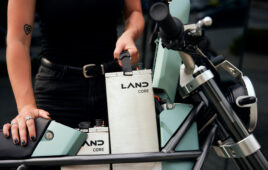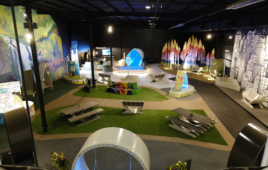SOUTH BELOIT, WI — The emergency braking requirements of today’s large wind turbines under maximum wind conditions can be compared to those of a 40-ton mining truck driving down a 25% grade at 87 miles per hour with a cliff 1/4-mile ahead.

The new design of the Warner
Electric ERS68 for wind turbine applications provides superior emergency
stopping power and improved protection from harsh environmental conditions for
long service life.
To meet these demanding requirements, Warner Electric, an Altra Industrial Motion company, has modified its ERS series of electrically-released, spring-engaged brakes to serve as pitch brakes for wind turbine applications that require both “static” holding power and the ability to withstand high inertia dynamic stops in an emergency situation.
The electromagnetic brake is mounted outboard of an inductive encoder which is mounted to the back of a motor to position the blades to the proper pitch. In normal use, the brake functions as a static brake to hold the blades from rotating in a power-off situation, during routine maintenance or for other reasons.
However, the design spec for one major manufacturer requires the brake to also be able to make 1,000 fully loaded dynamic stops during its service life. The largest in the Warner Electric ERS series, the 11.3-pound ERS68, has been tested to a capacity of more than 20,000 fully-loaded dynamic stops, surpassing the design spec by a factor of 20. The ERS68 brake offers 100 ft. lbs. of static torque with a maximum of 2,000 RPM and a brake release time of 0.2 sec.
The new blade pitch brakes also offer the advantage of being a one-piece design, fully-enclosed and painted to withstand extreme environmental conditions (salt-spray, condensation, water, etc.) Previous to the new design, pitch brake models have utilized two-piece designs that require an adapter plate, extra fasteners and an external boot-type seal in the gap between the brake and the adapter plate to prevent contamination.
Warner Electric has also developed a series of static holding brakes that meet the strict design criteria for controlling yaw when the wind turbine nacel is positioned into the wind. For this technically simpler application, the yaw brakes are also mounted on the back end of a motor.
Typically three pitch brakes and four to five yaw brakes are installed for motion control in the nacelle of each wind turbine.
::Design World::
Filed Under: Brakes • clutches, Green engineering • renewable energy • sustainability





Tell Us What You Think!